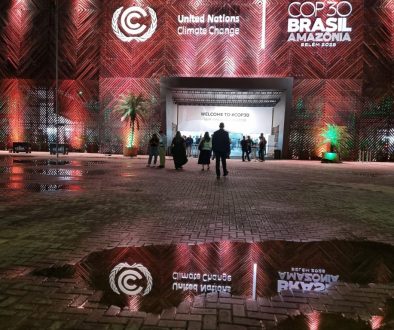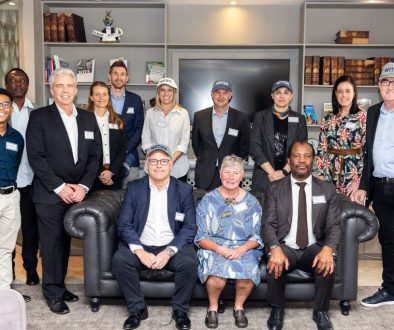Could Paper be the Solution to SA’s Maths Problem
On Thursday 4 December, Minister of Basic Education Angie Motshekga announced the results of the Annual National Assessments (ANA), noting that Grade Nine mathematics remained ‘our Achilles heel’. The ANA assessed the maths and language skills of more than seven million pupils in Grades One to Nine and found the Grade Nine class of 2014 scored ‘an unacceptably low’ average of 10.8%.
The Minister plans to launch an investigation into the matter. Meanwhile a mathematics development project involving thousands of South African maths educators and over four million learners is under way – using the medium of paper.
The Paper Manufacturers Association of South Africa (PAMSA) along with the Paper Recycling Association of South Africa (RecyclePaperZA) and the professional education and curriculum development organisation, SATeacher, launched a teacher-training project in 2012 which incorporates a paper and recycling component into the Foundation and Intersen Phase school curriculum.
The programme, which has the approval of the Department of Basic Education (DBE), shows educators how to make use of simple and inexpensive paper-based resources like paper plates and cut-outs so they can make maths concepts more tangible for the learner.
Teaching minus paper equals a problem
“As the world continues to push aside paper and schools replace textbooks with tablets, our learners suffer the consequences, and not just in mathematics,” says Jane Molony, PAMSA executive director. She adds that studies into paper and digital learning are beginning to reveal that the tactile experience of paper-based materials promote better comprehension and information retention.
SATeacher co-founder and director Liezel Blom explains. “The mistake we often make is to get children to memorise maths; we then test this memorisation.” For example, memory counting from one to 20 does not prove that the learner grasps the concept of one object versus 20.
“For there to be a deep understanding and connection with maths, we need to be practical – using our brains, eyes, hands and fingers – which is why we use the concrete-representational-abstracti method,” says Liezel.
Educators are also provided with printed DBE and SATeacher workbooks, lesson plans and guidelines for easy-to-make paper resources. “All of the resources share the message that paper is renewable and recyclable,” adds Molony.
The potential is exponential
A Gauteng-focused pilot phase in 2012 reached 1,726 schools, 40,000 educators and 1,25 million Grade R to Seven learners. In 2014, the programme was rolled out to the Western Cape and KwaZulu-Natal, reaching a collective 5,857 schools and a further 195 schools in Gauteng. In total, it has included more than 130,000 educators and four million learners in three years.
“Each educator trained has the potential to reach at least 20 learners,” says Molony who adds that many of the workshops during the year were over-subscribed. “We hope that through the continued support of the Department of Basic Education and our industry members we can take this programme to new levels.”
Ends
i – CONCRETE-REPRESENTATIONAL-ABSTRACT METHOD
- Concrete materials such as counters, unifix cubes, blocks, beans, sticks and stones can be used. To this end, SATeacher provides paper cut-outs at the back of each workbook.
- Representational materials could be semi-concrete in the form of dominoes, dice or pictures of cards and semi-abstract which involves the drawing of a particular number of pictures or shapes. “This level is not always dealt with in-depth in our schools in SA and without paper resources, this level of understanding is almost impossible,” says Liezel. “In the workbooks provide cut-outs at the back of the workbook and opportunity for learners to use pictures to solve problems.”
- After the learners have mastered the two previous levels we can move to the abstract level, using only numbers and mathematical symbols. The workbooks provide input for teachers to demonstrate each concept. Liezel reiterates that without paper resources, these concepts are very difficult to explain.
PAMSA has been promoting the interests and efforts of the South African pulp and paper industry since 1992. It provides a forum for the development and presentation of common views on pre-competitive industry issues, and engages stakeholders on matters of legislation, skills upliftment, education, research, environment, sustainability, and recycling. PAMSA, which currently represents more than 90% of the paper manufacturers in South Africa, is involved in numerous activities which are governed by an annual general meeting for members. Any employer involved in the manufacture of pulp, paper, board, tissue and recycled paper may hold PAMSA membership. www.thepaperstory.co.za | @PaperRocks_SA
RecyclePaperZA is an industry association representing processors and manufacturers of recycled paper fibre. Allied to the Paper Manufacturers Association of South Africa, RecyclePaperZA seeks to promote a culture of recycling by driving education and awareness programmes within schools and engaging with business and government.
SATeacher was founded by Dreyer Lötter and Liezel Blom in 2003 to focus on the professional development of teachers in South Africa. This gave rise to develop structured teaching plans and resources, based on the South African curriculum. To date SATeacher developed and published hundreds of titles and the materials are used in every school in South Africa. www.sateacher.co.za | facebook.com/SATeacher



